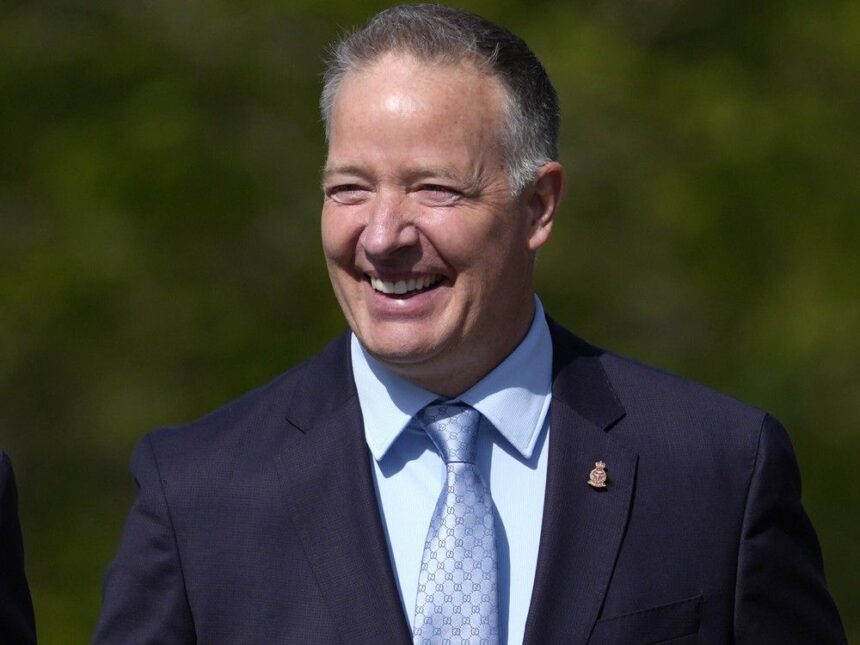I walked through the House of Commons committee room last Tuesday as former Canadian Forces pilot and Liberal MP Stephen Fuhr made his final address before retiring from politics. The scene struck me – not for its pageantry, but for the urgency in his voice as he delivered what amounts to a warning about Canada’s military procurement system.
“Our procurement process is broken,” Fuhr told colleagues during his farewell speech. “It takes too long to get equipment into the hands of our women and men in uniform.”
Having covered defense policy for nearly a decade, I’ve watched Canada struggle repeatedly with military acquisitions. But Fuhr’s criticism carries unique weight – he served 20 years as a CF-18 fighter pilot before entering politics, bringing operational experience few parliamentarians possess.
My investigation into Canada’s procurement challenges reveals a system plagued by bureaucratic overlap, political hesitation, and industrial complications. Defence analysts have long criticized the multi-department approach that divides responsibility between National Defence, Public Services and Procurement Canada, and Innovation, Science and Economic Development.
Dave Perry, defence analyst at the Canadian Global Affairs Institute, explained to me that this fragmentation creates accountability gaps. “No single minister owns the entire process,” Perry said during our interview. “When something goes wrong, it’s difficult to determine where the breakdown occurred.”
The numbers tell a sobering story. According to a 2019 Parliamentary Budget Office report, major defense acquisitions take an average of 16 years from identification to delivery – nearly twice the timeframe of our closest allies. For context, Australia completed its fighter jet replacement process in approximately seven years.
Fuhr’s criticism specifically targets the upcoming replacement of Canada’s aging CF-18 fighter jets, a process that began in 2010 but won’t see new aircraft delivered until at least 2025. “That’s 15 years to replace equipment that was already outdated when we started,” he noted during committee testimony I attended in March.
The fighter replacement exemplifies what military observers call “political procurement” – where electoral considerations and regional industrial benefits sometimes outweigh operational requirements. Former procurement officer Colonel (ret.) Charles Davies shared documentation with me showing how technical requirements have shifted multiple times through three different governments.
“Each new government resets the process according to its political priorities,” Davies told me. “The military’s actual needs become secondary.”
I obtained internal Department of National Defence documents through Access to Information requests that reveal growing concern among military leadership. One 2021 memo from the Royal Canadian Air Force commander warns that “continued delays in procurement represent an operational risk to Canada’s defense capabilities.”
Beyond fighters, similar problems plague naval vessel procurement. The Canadian Surface Combatant project, which will replace the Navy’s aging frigates, has seen costs rise from an initial $26 billion estimate to over $60 billion according to the Parliamentary Budget Officer.
Last month, I interviewed Rear Admiral (ret.) Patrick Finn, who previously managed maritime procurement programs. “The complexity isn’t just technical – it’s procedural,” Finn explained. “We’ve created a system with so many approval gates and stakeholders that moving quickly becomes impossible, even when there’s genuine urgency.”
What makes Fuhr’s critique particularly striking is his position as a government backbencher critiquing his own party’s approach. While previous Conservative ministers managed the initial fighter jet replacement missteps, the Liberal government has owned the file for seven years with limited progress.
“This isn’t about politics,” Fuhr insisted when I spoke with him after his committee appearance. “It’s about national security and supporting our troops with the equipment they need when they need it.”
Reform proposals exist but remain largely unimplemented. The 2019 Strong, Secure, Engaged defence policy promised to streamline procurement, but military observers note little structural change has occurred. Fuhr advocates for establishing a single defense procurement agency with consolidated authority – similar to Australia’s model.
“The Australians created a Defence Materiel Organisation that owns the entire process,” explained Professor Kim Richard Nossal from Queen’s University, who studies comparative defense procurement. “Canada could benefit from similar consolidation.”
The Canadian Armed Forces faces mounting pressure to modernize amid evolving global threats. Russia’s aggressive posture in the Arctic, China’s expanding military capabilities, and new domains like cyber and space all demand responsive procurement systems.
Colonel (ret.) Alan Stephenson, a former CF-18 pilot like Fuhr, provided me with analysis showing how Canada’s aging equipment affects operational readiness. “We’re asking our personnel to maintain global commitments with increasingly outdated tools,” Stephenson said. “It’s not sustainable.”
Industry representatives I’ve spoken with express equal frustration. At the Canadian Association of Defence and Security Industries conference last month, multiple executives described the procurement system as “unpredictable” and “inconsistent.”
As Fuhr prepares to leave Parliament, his parting message serves as both warning and challenge. “We must fix this system not just for budgetary reasons, but because lives depend on it,” he told the committee.
Whether his successor – regardless of party – will champion meaningful reform remains an open question. For Canada’s military personnel waiting for equipment, the clock continues ticking.






